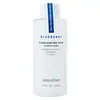What's inside
What's inside
 Key Ingredients
Key Ingredients

 Benefits
Benefits

 Concerns
Concerns

No concerns
 Ingredients Side-by-side
Ingredients Side-by-side

Water
Skin ConditioningDipropylene Glycol
HumectantPropanediol
SolventGlycerin
HumectantGlycereth-26
Humectant1,2-Hexanediol
Skin ConditioningPolyquaternium-51
Skin ConditioningVaccinium Angustifolium Fruit Extract
Skin ProtectingCitrus Aurantium Dulcis Peel Oil
MaskingLavandula Angustifolia Oil
MaskingSodium Hyaluronate
HumectantPentylene Glycol
Skin ConditioningC12-14 Pareth-12
EmulsifyingMethyl Gluceth-20
HumectantTriethylhexanoin
MaskingDiphenyl Dimethicone
EmollientButylene Glycol
HumectantDisodium EDTA
Acrylates/C10-30 Alkyl Acrylate Crosspolymer
Emulsion StabilisingTromethamine
BufferingHydrogenated Lecithin
EmulsifyingPolyglyceryl-10 Oleate
Skin ConditioningGlyceryl Caprylate
EmollientEthylhexylglycerin
Skin ConditioningWater, Dipropylene Glycol, Propanediol, Glycerin, Glycereth-26, 1,2-Hexanediol, Polyquaternium-51, Vaccinium Angustifolium Fruit Extract, Citrus Aurantium Dulcis Peel Oil, Lavandula Angustifolia Oil, Sodium Hyaluronate, Pentylene Glycol, C12-14 Pareth-12, Methyl Gluceth-20, Triethylhexanoin, Diphenyl Dimethicone, Butylene Glycol, Disodium EDTA, Acrylates/C10-30 Alkyl Acrylate Crosspolymer, Tromethamine, Hydrogenated Lecithin, Polyglyceryl-10 Oleate, Glyceryl Caprylate, Ethylhexylglycerin
Water
Skin ConditioningGlycerin
HumectantCaprylic/Capric Triglyceride
MaskingDipropylene Glycol
HumectantHydrogenated Poly(C6-12 Olefin)
Skin ConditioningPentylene Glycol
Skin ConditioningPPG-10 Methyl Glucose Ether
Skin ConditioningBehenyl Alcohol
EmollientButylene Glycol
HumectantCaprylhydroxamic Acid
Carbomer
Emulsion StabilisingDimethicone
EmollientDisodium EDTA
Glyceryl Stearate
EmollientHydrolyzed Hyaluronic Acid
HumectantLactococcus/Hyaluronic Acid Ferment Filtrate
PEG-6
HumectantPEG-32
HumectantPEG-20 Sorbitan Isostearate
EmulsifyingPhytosteryl/Octyldodecyl Lauroyl Glutamate
Skin ConditioningPropanediol
SolventSodium Acetylated Hyaluronate
HumectantSodium Hyaluronate
HumectantStearyl Alcohol
EmollientTriethanolamine
BufferingWater, Glycerin, Caprylic/Capric Triglyceride, Dipropylene Glycol, Hydrogenated Poly(C6-12 Olefin), Pentylene Glycol, PPG-10 Methyl Glucose Ether, Behenyl Alcohol, Butylene Glycol, Caprylhydroxamic Acid, Carbomer, Dimethicone, Disodium EDTA, Glyceryl Stearate, Hydrolyzed Hyaluronic Acid, Lactococcus/Hyaluronic Acid Ferment Filtrate, PEG-6, PEG-32, PEG-20 Sorbitan Isostearate, Phytosteryl/Octyldodecyl Lauroyl Glutamate, Propanediol, Sodium Acetylated Hyaluronate, Sodium Hyaluronate, Stearyl Alcohol, Triethanolamine
 Reviews
Reviews

Ingredients Explained
These ingredients are found in both products.
Ingredients higher up in an ingredient list are typically present in a larger amount.
Butylene Glycol (or BG) is used within cosmetic products for a few different reasons:
Overall, Butylene Glycol is a safe and well-rounded ingredient that works well with other ingredients.
Though this ingredient works well with most skin types, some people with sensitive skin may experience a reaction such as allergic rashes, closed comedones, or itchiness.
Learn more about Butylene GlycolDipropylene Glycol is a synthetically created humectant, stabilizer, and solvent.
This ingredient helps:
Dipropylene glycol is technically an alcohol, but it belongs to the glycol family (often considered part of the ‘good’ alcohols). This means it is hydrating and gentle on skin unlike drying solvent alcohols like denatured alcohol.
As a masking agent, Dipropylene Glycol can be used to cover the smell of other ingredients. However, it does not have a scent.
Studies show Dipropylene Glycol is considered safe to use in skincare.
Learn more about Dipropylene GlycolDisodium EDTA plays a role in making products more stable by aiding other preservatives.
It is a chelating agent, meaning it neutralizes metal ions that may be found in a product.
Disodium EDTA is a salt of edetic acid and is found to be safe in cosmetic ingredients.
Learn more about Disodium EDTAGlycerin is already naturally found in your skin. It helps moisturize and protect your skin.
A study from 2016 found glycerin to be more effective as a humectant than AHAs and hyaluronic acid.
As a humectant, it helps the skin stay hydrated by pulling moisture to your skin. The low molecular weight of glycerin allows it to pull moisture into the deeper layers of your skin.
Hydrated skin improves your skin barrier; Your skin barrier helps protect against irritants and bacteria.
Glycerin has also been found to have antimicrobial and antiviral properties. Due to these properties, glycerin is often used in wound and burn treatments.
In cosmetics, glycerin is usually derived from plants such as soybean or palm. However, it can also be sourced from animals, such as tallow or animal fat.
This ingredient is organic, colorless, odorless, and non-toxic.
Glycerin is the name for this ingredient in American English. British English uses Glycerol/Glycerine.
Learn more about GlycerinPentylene glycol is typically used within a product to thicken it. It also adds a smooth, soft, and moisturizing feel to the product. It is naturally found in plants such as sugar beets.
The hydrophilic trait of Pentylene Glycol makes it a humectant. As a humectant, Pentylene Glycol helps draw moisture from the air to your skin. This can help keep your skin hydrated.
This property also makes Pentylene Glycol a great texture enhancer. It can also help thicken or stabilize a product.
Pentylene Glycol also acts as a mild preservative and helps to keep a product microbe-free.
Some people may experience mild eye and skin irritation from Pentylene Glycol. We always recommend speaking with a professional about using this ingredient in your routine.
Pentylene Glycol has a low molecular weight and is part of the 1,2-glycol family.
Learn more about Pentylene GlycolPropanediol is an all-star ingredient. It softens, hydrates, and smooths the skin.
It’s often used to:
Propanediol is not likely to cause sensitivity and considered safe to use. It is derived from corn or petroleum with a clear color and no scent.
Learn more about PropanediolSodium Hyaluronate is hyaluronic acid's salt form. It is commonly derived from the sodium salt of hyaluronic acid.
Like hyaluronic acid, it is great at holding water and acts as a humectant. This makes it a great skin hydrating ingredient.
Sodium Hyaluronate is naturally occurring in our bodies and is mostly found in eye fluid and joints.
These are some other common types of Hyaluronic Acid:
Learn more about Sodium HyaluronateWater. It's the most common cosmetic ingredient of all. You'll usually see it at the top of ingredient lists, meaning that it makes up the largest part of the product.
So why is it so popular? Water most often acts as a solvent - this means that it helps dissolve other ingredients into the formulation.
You'll also recognize water as that liquid we all need to stay alive. If you see this, drink a glass of water. Stay hydrated!
Learn more about Water